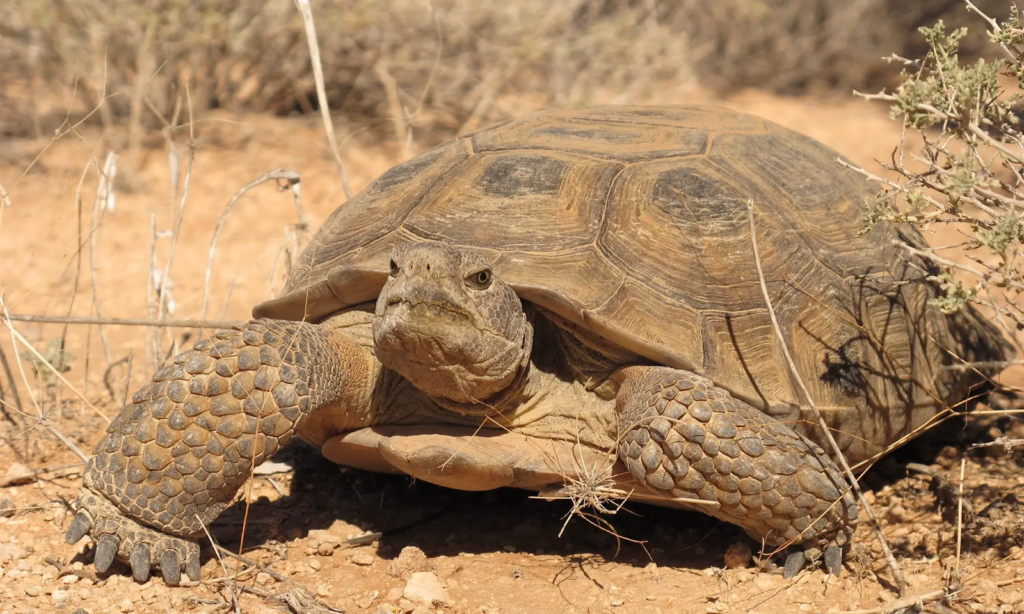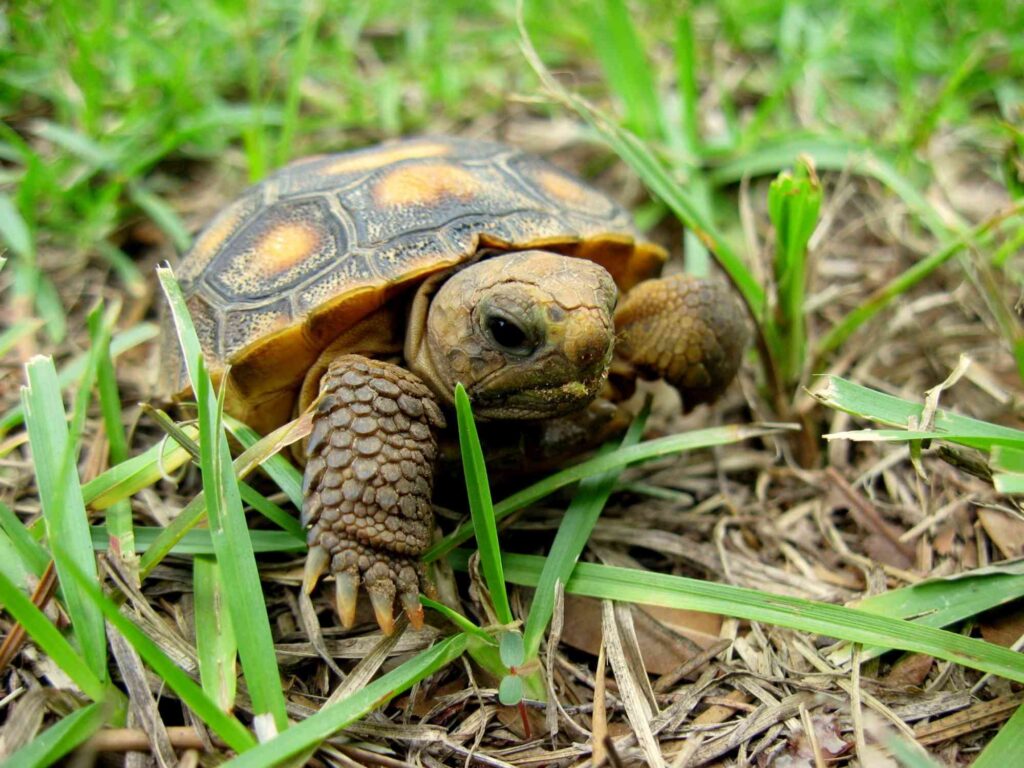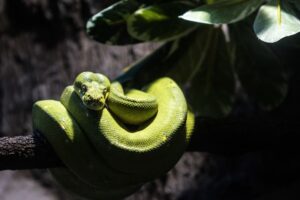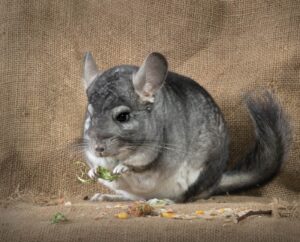Table of Contents
ToggleIntroduction

The Gopher Tortoise, known as the “architect of the ecosystem,” is crucial in determining the richness of its habitat. How Long Do Gopher Turtles Live? These slow-moving reptiles are keystone species, digging enormous burrows that provide shelter for themselves and a wide range of other creatures. From insects to mammals. However, our understanding of their longevity remains a source of fascination and investigation.
To understand the lifespan of Gopher Tortoises, we must first understand their biology, behavior, and the dynamic settings in which they live. These tortoises are among a limited group of long-lived species, having lived for decades. Various factors influence their longevity, including genetics, environmental conditions, and human activities.
Keystone’s Role In Ecosystems
The Gopher Tortoise emerges as a keystone species, a linchpin in the delicate balance of southeastern ecosystems. Its significance transcends its rugged appearance, extending into the realms of ecosystem engineering, biodiversity preservation, and the creation of underground havens.
Ecosystem Engineering: Gopher Tortoises wields an unparalleled ability as an ecosystem engineer. Their characteristic burrows, meticulously crafted with powerful limbs, serve as multifunctional sanctuaries. Beyond providing refuge for the tortoise, these caves become vital shelters for various other species. Small mammals, reptiles, and insects seek refuge in the cool depths during scorching Southern summers. Finding protection from predators and the elements. The complex network of caves enhances soil aeration, influences nutrient cycling, and contributes to the ecosystem’s overall health.
Influence on Biodiversity: The Gopher Tortoise stands as a guardian of biodiversity, shaping the composition and dynamics of its habitat. These tortoises inadvertently foster a diverse range of flora and fauna by creating a mosaic of microenvironments within their burrows. Plants that thrive in the disturbed soils near the entrances coexist with those adapted to the stable, undisturbed interiors. The tortoise’s selective grazing further influences plant communities. Exerting a subtle yet profound impact on the broader biodiversity of the region.
Burrow Creation and its Importance: The artistry of burrow creation by Gopher Tortoises is a critical facet of their ecological influence. These caves, with entrances meticulously aligned to avoid flooding, provide a haven during adverse weather conditions. The underground shelters shield inhabitants from extreme temperatures, wildfires, and other environmental stressors. The interconnectedness of these caves also facilitates movement for various species, allowing for migration, foraging, and, in some cases, serving as nurseries for young animals.
Factors Influencing Lifespan
The lifespan of Gopher Tortoises is a complex interplay of various factors, each contributing to the endurance of these remarkable reptiles. From genetic predispositions to the quality of their habitats and the intricacies of reproductive strategies. Understanding these influences provides insights into the longevity of Gopher Tortoises.
Genetic Predispositions: Genetic factors play a fundamental role in determining the lifespan of Gopher Tortoises. In populations, gene variations may influence traits such as growth rates, disease resistance, and longevity. Some tortoises may inherit genetic traits that confer resilience and contribute to a longer lifespan. While others may be more susceptible to environmental stressors. Unraveling the genetic code of Gopher Tortoises holds the key to comprehending the variations in lifespan observed among individuals.
Habitat Quality: Habitat quality is a critical determinant of Gopher Tortoise’s lifespan. These reptiles are highly adapted to specific environments, favoring well-drained sandy soils characteristic of the southeastern United States. Human-induced alterations to their habitats, such as deforestation, urbanization, and fragmentation. Can significantly impact the availability of suitable foraging grounds, burrow sites, and reproductive areas. Preserving and restoring high-quality habitats is paramount to ensuring the longevity of Gopher Tortoise populations.
Life Stages
The lifespan of Gopher Tortoises unfolds through distinct life stages, each marked by unique challenges, adaptations, and contributions to the overall dynamics of their populations and ecosystems.
Hatchlings: The journey of a Gopher Tortoise begins with the vulnerable stage of hatchlings. Emerging from carefully chosen nests, these miniature replicas of adult counterparts face a dangerous world. The immediate challenges include evading predators, navigating diverse landscapes, and seeking refuge in burrows. The early stages of life are crucial for hatchling survival as they adapt to the intricacies of their environment and establish the foundation for their future in the wild.
Juveniles: As Gopher Tortoises transition to juveniles, they navigate a phase of rapid growth and development. Foraging becomes a primary focus, and the tortoises actively shape their habitats by grazing on vegetation. This period bears the mark of acquiring essential skills, including burrow excavation and navigation.
Mature Adults: Mature adulthood represents the pinnacle of a Gopher Tortoise’s life, characterized by reproductive activities and the consolidation of their roles as ecosystem engineers. During this stage, the tortoises engage in complex courtship rituals, selective mate choices, and the establishment of territories. Mature adults become architects of their environments, creating and maintaining caves that serve as crucial shelters for themselves and numerous other species.
Insights into Each Life Stage: Examining each life stage of Gopher Tortoises provides invaluable insights into their survival strategies, reproductive behaviors, and ecological contributions. The challenges faced by hatchlings and juveniles illuminate the vulnerability of early life, while the resilience of mature adults exemplifies the culmination of adaptive strategies honed over decades. Insights into these life stages inform conservation efforts. Emphasizing the importance of protecting critical habitats, mitigating threats, and understanding these reptiles’ interconnected roles in southeastern ecosystems.
Conclusion
Because Gopher Tortoises spend so much of their lives concealed beneath the earth’s surface, determining their exact longevity has been difficult. Our research, however, has shown the several elements that contribute to their longevity, ranging from genetic predispositions to the quality of their environments. It is a story intertwined with strands of adaptation, survival, and coexistence, portraying a portrait of a species inextricably linked to the habitats in which it lives.
One important discovery is the Gopher Tortoise’s role as an ecosystem engineer, establishing subterranean sanctuaries for various species. Carefully dug over decades, these tunnels attest to the tortoise’s role in preserving biodiversity and ecological equilibrium.







